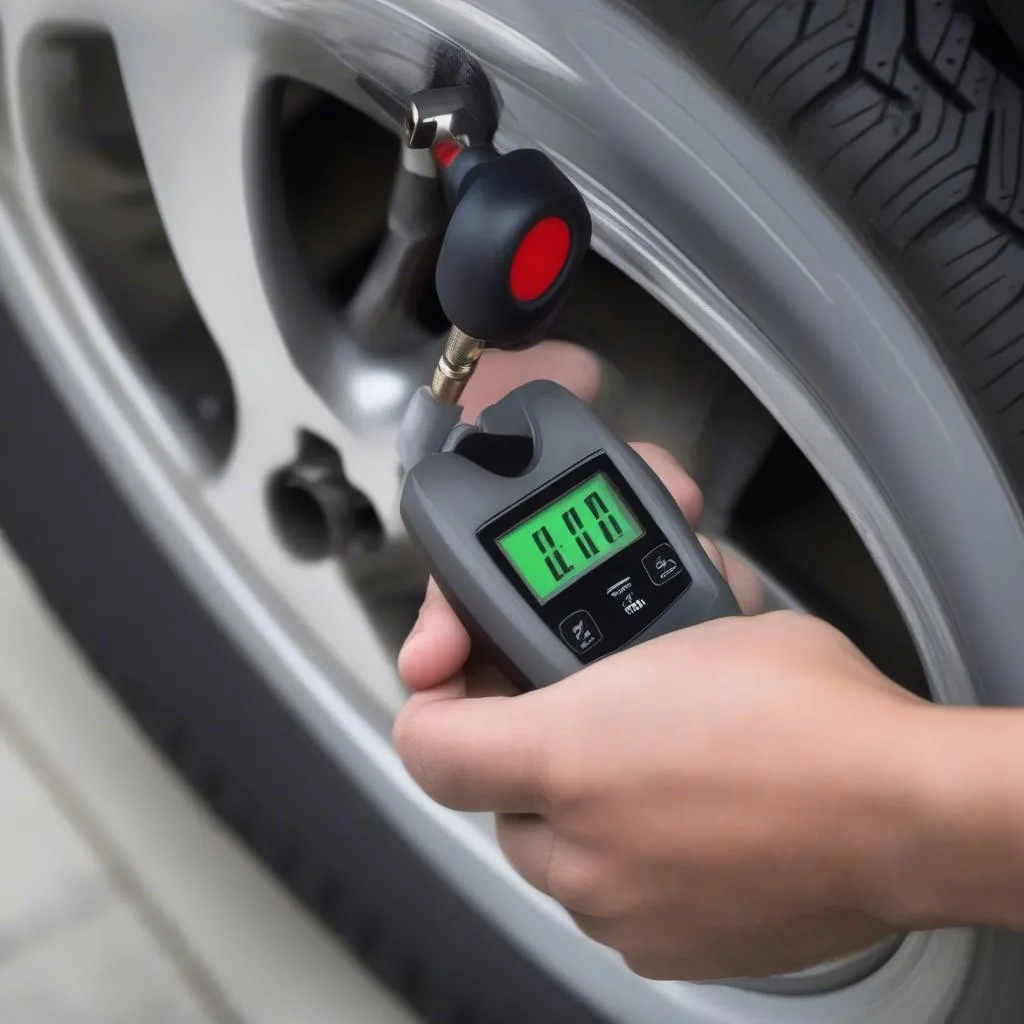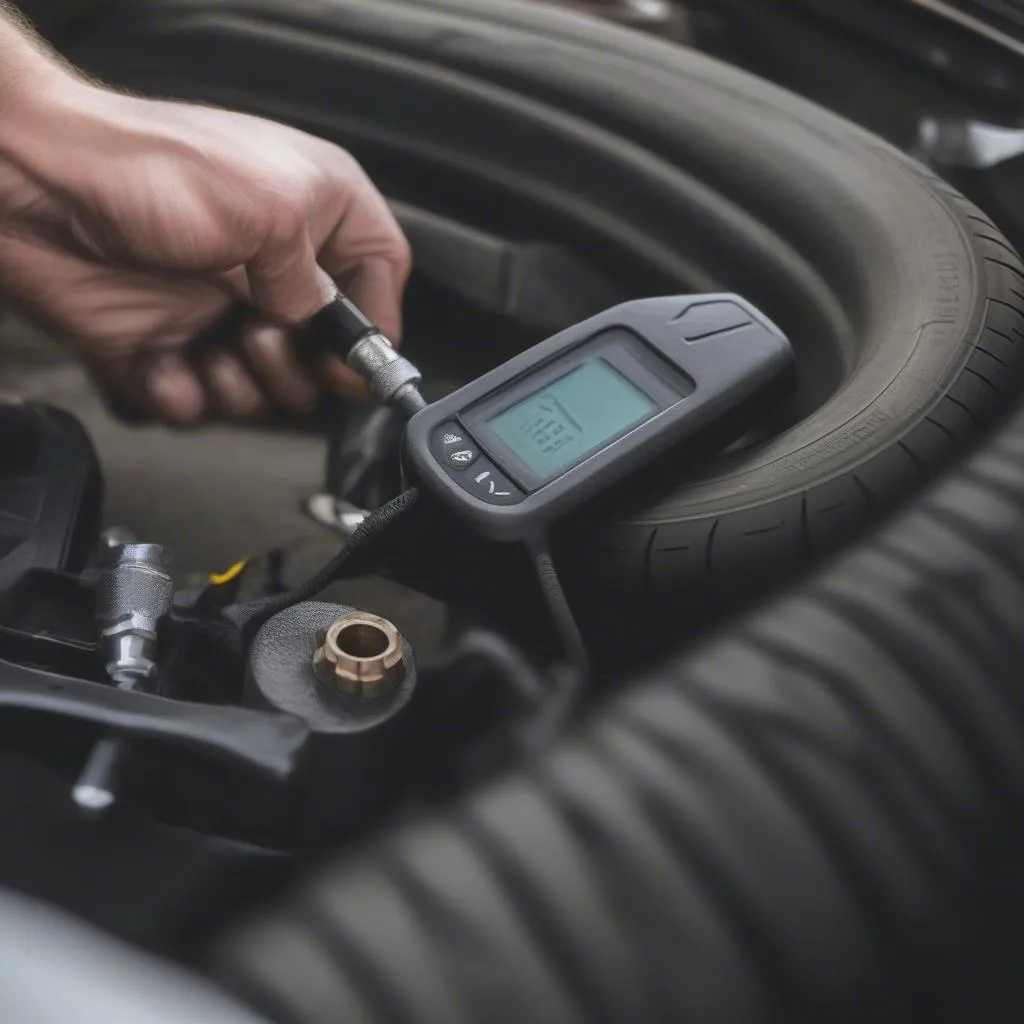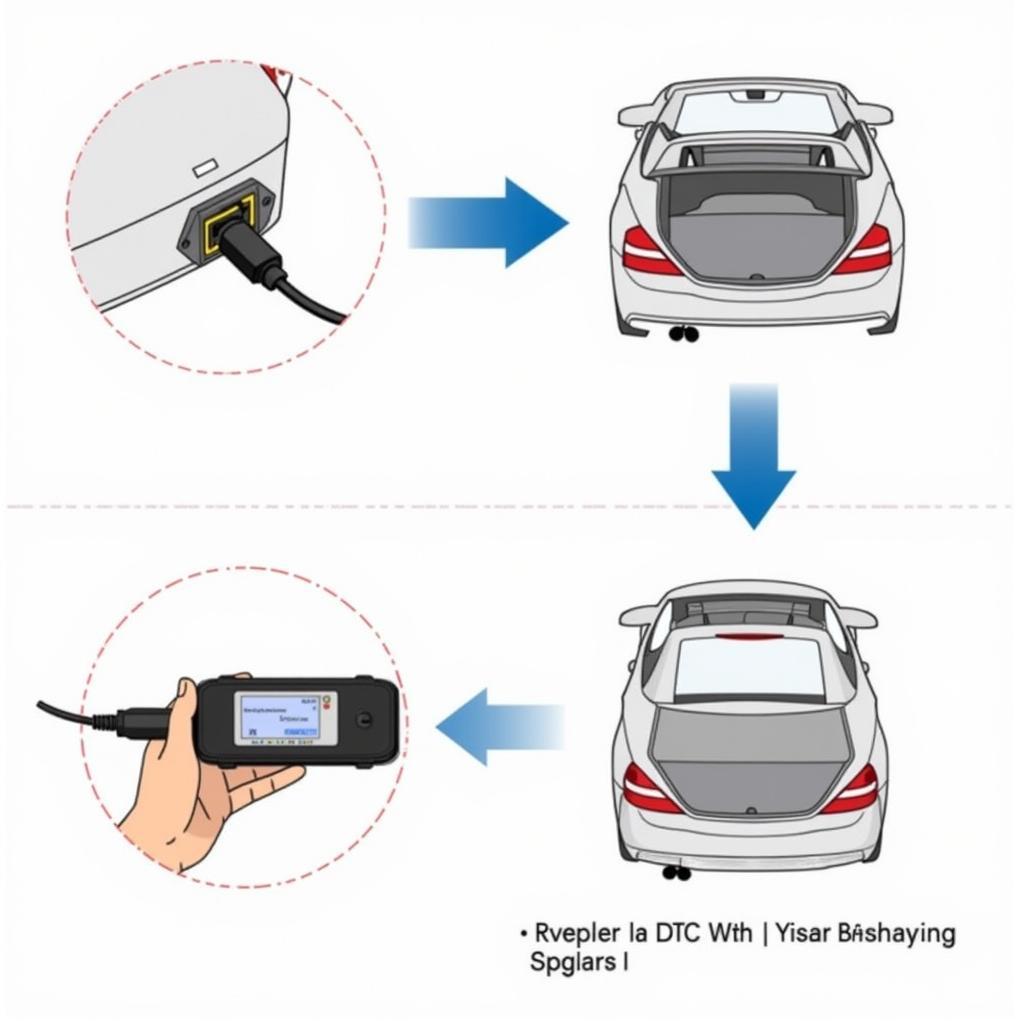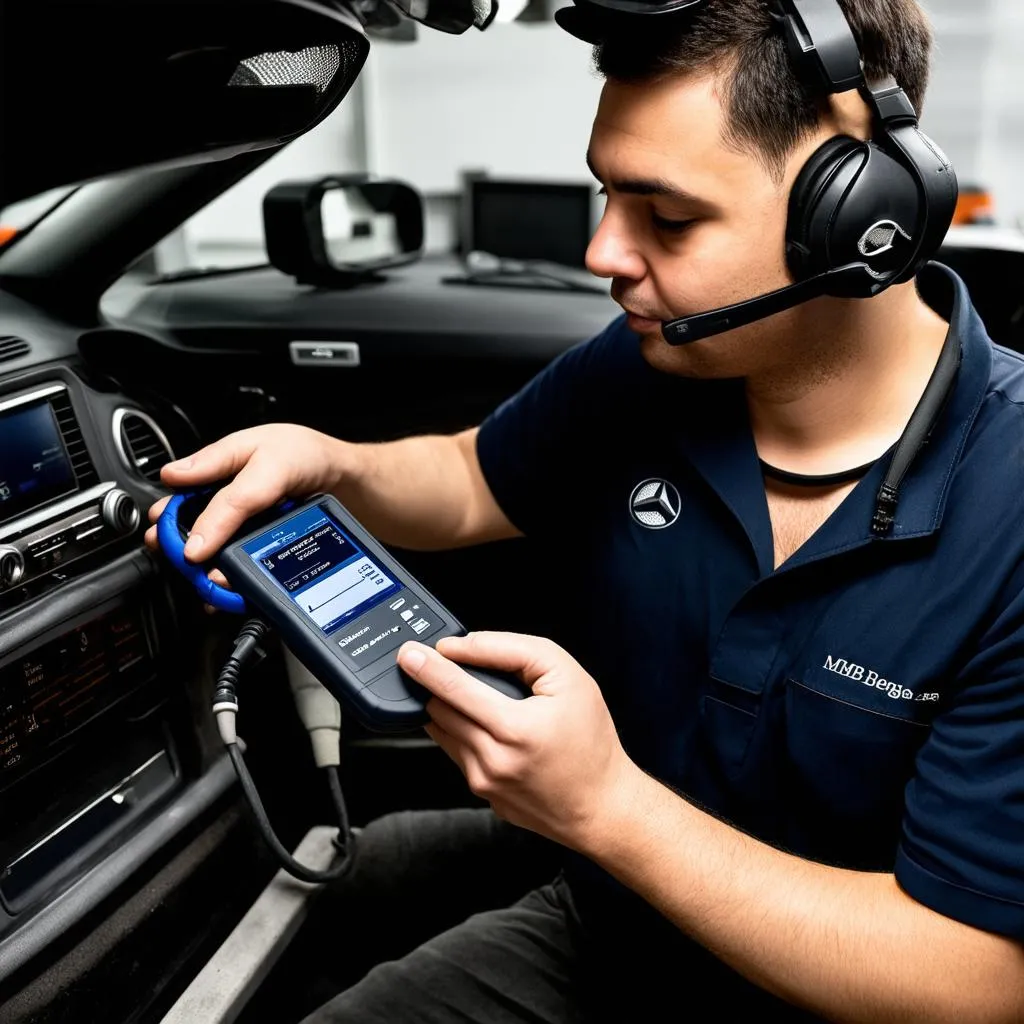Dealing with a tire pressure light on your Mercedes dashboard? You’re not alone. Maintaining correct tire pressure is crucial for safety, fuel efficiency, and the overall performance of your vehicle. This guide will walk you through how to fix tire pressure issues on your Mercedes-Benz, empowering you to get back on the road with confidence.
Understanding Tire Pressure in Your Mercedes
Before we dive into the “how-to”, let’s cover the “why”.
Why is Correct Tire Pressure Important?
- Safety: Underinflated tires can overheat, increasing the risk of a blowout. Overinflation can lead to reduced traction and handling.
- Fuel Economy: Underinflated tires create more rolling resistance, forcing your engine to work harder and consuming more fuel.
- Tire Lifespan: Improper inflation causes uneven tire wear, shortening their lifespan and potentially leading to costly replacements.
How to Find the Recommended Tire Pressure for Your Mercedes
Your Mercedes’ recommended tire pressure is not a one-size-fits-all figure. It varies depending on factors like vehicle model, year, and tire size. Here’s where to find it:
- Driver’s Side Door Jamb Sticker: Open the driver’s side door and look for a sticker on the jamb. It will list the recommended tire pressures for both the front and rear tires.
- Owner’s Manual: Your Mercedes owner’s manual provides detailed information on tire pressure, including recommended pressures for different load conditions.
Troubleshooting and Fixing Tire Pressure Issues
1. Identifying the Problem
- Tire Pressure Monitoring System (TPMS): Your Mercedes is equipped with a TPMS that illuminates a warning light on the dashboard when one or more tires are significantly underinflated.
- Visual Inspection: Regularly inspect your tires for signs of underinflation, such as the sidewalls looking more “squished” than usual.
2. Gathering Your Tools
- Tire Pressure Gauge: A reliable tire pressure gauge is essential for accurate readings. Digital gauges often provide more precise measurements.
- Air Compressor: You can find portable air compressors at most auto parts stores or use ones available at gas stations.
- Tire Inflator with Gauge (optional): This handy tool combines a gauge and inflator for added convenience.
3. Adjusting Your Tire Pressure
- Unscrew the Valve Stem Cap: Locate the valve stem on your tire (it looks like a small, protruding metal stem).
- Check the Current Pressure: Press the tire pressure gauge firmly onto the valve stem to get a reading.
- Inflate or Deflate as Needed:
- If the pressure is too low: Use your air compressor or tire inflator to add air in small increments, checking the pressure frequently.
- If the pressure is too high: Press the metal pin inside the valve stem with the tip of your gauge or a key to release air in small bursts. Check the pressure frequently.
- Replace the Valve Stem Cap: Ensure it’s screwed on tightly to prevent air leaks.
- Repeat for All Tires: Don’t forget to check and adjust the pressure in your spare tire as well.
4. Resetting the TPMS
After adjusting your tire pressure, you’ll need to reset the TPMS. Refer to your owner’s manual for the specific procedure for your Mercedes model, as it can vary. Generally, it involves navigating through the vehicle’s infotainment system.
 Tire Pressure Gauge
Tire Pressure Gauge
Common Questions About Mercedes Tire Pressure
Why is my tire pressure light still on after inflating the tires?
- TPMS Sensor Issue: A faulty TPMS sensor may be sending inaccurate readings.
- Sensor Battery: TPMS sensors have batteries that can die, requiring replacement.
- System Malfunction: There might be a malfunction within the TPMS system itself.
Recommendation: If the light persists after inflating and resetting the system, it’s best to consult a qualified mechanic or your Mercedes dealership for diagnosis and repair.
Can I drive with the tire pressure light on?
While you can technically drive a short distance with the TPMS light on, it’s highly discouraged. Ignoring it could lead to unsafe driving conditions and potential tire damage.
 TPMS Sensor
TPMS Sensor
Keeping Your Mercedes Running Smoothly
Proper tire pressure is just one aspect of maintaining your Mercedes-Benz. For comprehensive diagnostics and expert advice on a range of automotive issues, explore the resources available at CARDIAGTECH. Their website offers insights into common car problems and solutions, helping you stay one step ahead when it comes to your vehicle’s health.
Remember, a little preventative maintenance goes a long way in ensuring a safe and enjoyable driving experience!


